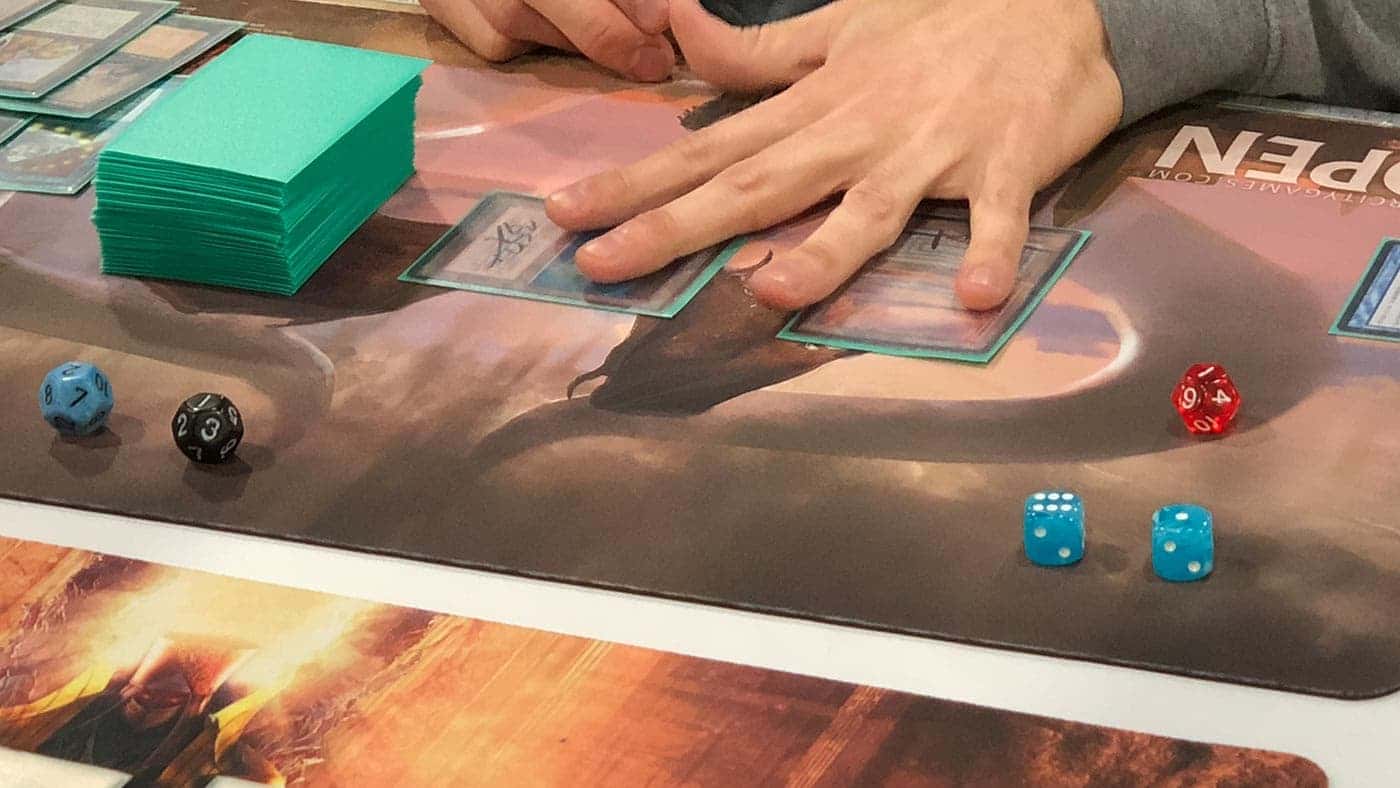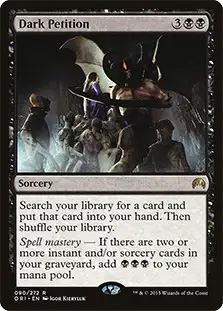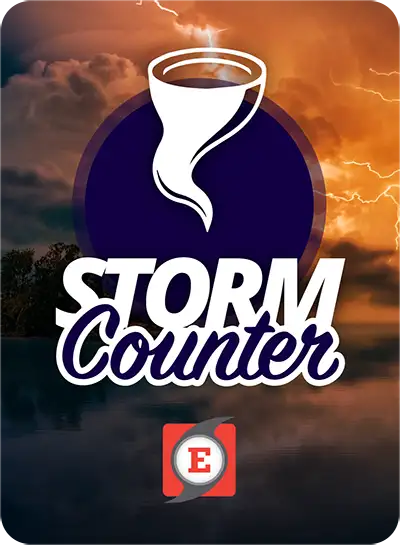This might sound a bit counter-intuitive, but there is a possibility, as a storm player, that playing MTGO can make you worse at piloting your deck in paper (yep, I said it).
Now, don't get me wrong, I think that playing MTGO is one of the most important things any magic player can do. It significantly increases your understanding of the game's rules and interactions because there's never any misinterpretation of the order of spells and abilities resolving. It also really gives you a solid picture of both turn phases and steps that playing in paper usually doesn't. It's an extremely important item in any competitive players toolbox; however, this can hamper the Storm player when playing in paper. It's startlingly easy to lose track of all the very complicated plays our deck is centered around without that digital framework to fall back on. Today, with that in mind, we are going to go into some methods for rebuilding that framework in your paper games and avoiding misplays that can be the bane of our existence. For those of you who don't know me, I transitioned into playing Storm after being a long-time Death & Taxes player. Death & Taxes is a deck that thrives on its ability to gain an incremental advantage, hence the 'Taxes' element. When playing Death & Taxes, it's necessary to be very precise with each play and to watch the opponent with precision as well. When playing against Storm players, I quickly noticed a pattern with players who were going really fast and not going through their plays step-by-step: they would often make small mistakes that would cost them the game. Now, most of those mistakes weren't meant to be malicious, but at the end of the day, if I didn't call them out on it, I would have been on the receiving end of dozens of undeserved losses. If I had a dollar for every storm player that tried to deal me lethal damage with Tendrils of Agony but miscounted their Storm or didn't even have the two black mana required to cast it, I'd have a playset of Beta Duals by now! Coming from that Death & Taxes background, I always urge Storm players to take their time when comboing off while playing in paper, as a lot of those small mistakes can be easily avoided. Opponents that are playing fair decks at a high skill level will be vigilantly looking for those little mistakes to gain the incremental advantage that they need to win an unfavorable matchup. I think as a community, our goal should be to make our opponents salty because they lost to the Storm Mechanic, not salty because they feel like something shady happened. As such, I am going to share some of the strategies that I have been practicing, to build great Storm habits in paper!Be Intentional with how you communicate.
When a magic player is good at communicating with their opponent, it makes for a much more enjoyable experience for all parties involved (considering the fact that they probably won't be interacting with you in gameplay, interacting with them on a communicative level is the least we can do). Personally, I've made it a habit to go through my plays step-by-step. This is an example of how I communicate, as I go through my combo turn:"I'm going to cast Dark Ritual, does it resolve?"
*wait for confirmation from opponent*
"Okay, my Storm count is now one and I have three black mana in my mana pool."
Additionally, I make it a priority to update the dice that I am using to track my mana and storm after every spell that I cast; then as a final cautionary step, I get my opponent to confirm that everything looks correct on the dice. If they have any issue with what I've done, I resolve the issue before moving on to my next spell. This might seem very obnoxious, but since doing this, I haven't had any judge calls or opponents being disgruntled about how I've conducted myself as a player.
The other thing to watch out for in paper is announcing that you are "holding priority". The very first time I played The Epic Storm in a paper tournament, someone called a judge on me, because I wasn't quick enough to let the opponent know that I was holding priority after casting Infernal Tutor. The judge ended up giving me a warning and letting me crack my Lion's Eye Diamond, but the situation definitely left a lasting impression on me. From that point on, when I'm about to cast a spell where I need to hold priority, I communicate it in the following way:
"I am going to be casting this next spell holding priority, do you understand?"
Once they acknowledge, I will then proceed to actually announce the spell I am casting and then go through the steps of casting it. It seems ridiculous to have to do all of that, but it would be devastating to lose a game because you weren't able to crack your Lion's Eye Diamond in response to your tutor or cantrip.
Get Good at the Math.
One of the confusing things for Storm players to get down at first is the mental math behind their rituals. I've found that the best way to do this is to use positive mental shortcuts. It's a method that focuses on using simple addition, instead of getting bogged down in all the arithmetic, and it simplifies the math when you're in the heat of the moment. For example, we would normally count the mana generated and spent by our process of using Rite of Flame as:1-1+2-1+3-1+4-1+5 = 11
And the method for Dark Ritual as:
1-1+3-1+3-1+3-1+3 = 9
This, again, is a bit clunky, and conveying that to an opponent or trying to track that all in your own head will most likely give you a stroke in a high-pressure situation.
Wouldn't it be easier instead to think of Rite of Flame as generating 2,4,7,11 mana? Or Dark Ritual generating 3,5,7,9? This clearly works, and once you've memorized the process of counting in positive chunks, you won't need to calculate all the math in your own head every time you try to cast chains of rituals. Now we can't always assume that our opponent will understand these positive mental shortcuts, which is why we want to indicate everything as visually as possible, both by gesture and by using dice. For example, if I have two red mana floating, with one Rite of Flame in the graveyard, this is how I will communicate as I cast an additional Rite of Flame:
"Okay, I am casting this Rite of Flame, which nets me one additional red mana, leaving me with three red mana. Then because I have this other copy of Rite of Flame in my graveyard"
*Point at second Rite of Flame in graveyard*
“I net an additional red mana, leaving me with four red mana total."
*Once opponent concurs, change the number on dice*
Taking the time to visually explain things to our opponent goes a long way towards helping them feel comfortable with what is happening to them (even though they are inching closer and closer to their inevitable doom). You can do the same with Dark Ritual, by communicating that each copy nets you two additional mana, but Dark Ritual is much easier to comprehend than Rite of Flame as the graveyard isn't involved. Again, it may seem silly but being extremely deliberate can make all the difference, especially at higher levels of play. If you can get the ritual math down to the point where you don't even need to think about it, you are giving yourself a huge edge; and if you're good at communicating you won't lose that edge to a Judge call.Build good Sideboarding habits.
The Epic Storm has a high level of dexterity compared to most other Legacy decks because you can use Burning Wish to grab cards from your sideboard in game one. This creates some unique challenges that you would never face in other decks because it's possible for sideboard cards to end up still in your deck in game two. I hate to admit this publicly, but last month I was playing at a local tournament against Goblins. In game one, I was able to Burning Wish for Dark Petition, and then Ad Nauseam for the kill. In game two, I was lucky enough to be able to go for the same line, but when I cast Burning Wish, I was struck with absolute horror as I realized that Dark Petition was still in my deck, and not in my sideboard. This was very unfortunate, and ultimately forced me into an Empty the Warrens line which ended up costing me the game. At first, I thought I was the only one who made such careless mistakes (this wasn’t the first time), but from talking to people it's actually a pretty common occurrence. I now have a specific routine after every match:- I sideboard as normal and then when I am satisfied with my sideboarding options, I count my sideboard.
- If I count 15 cards, I will Riffle shuffle a minimum of eight times, depending on how long my opponent is taking.























